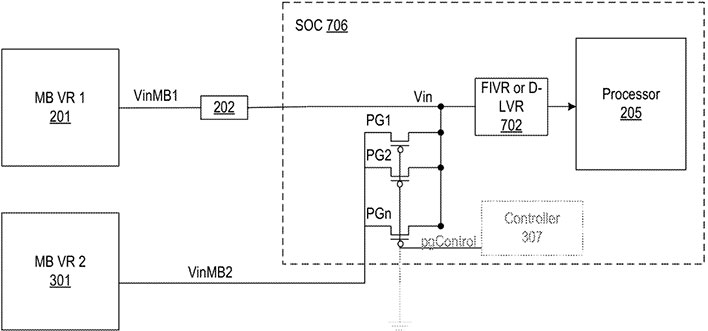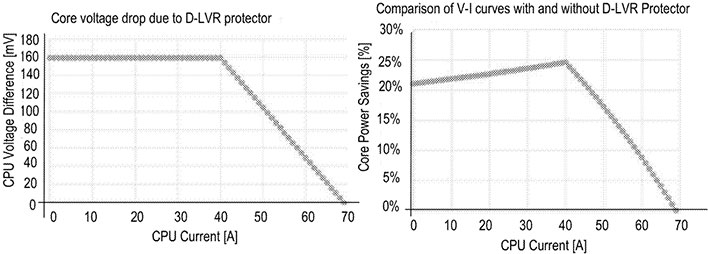Intel Raptor Lake’s Special VReg Tech Could Dramatically Reduce Power Consumption

A patent application filed by Intel suggests its next-gen Raptor Lake processors could implement a rather clever mechanism to reduce power usage by as much as 25 percent. Intel actually filed the patent back in January of 2020, but what it describes is not present on its 12th Gen Core Alder Lake processors that released to retail earlier this month.
What typically happens when shifting to a smaller node is the resulting product brings with it better power efficiency. Architectural tweaks not directly related to smaller nodes can have the same benefit. Looking ahead to Raptor Lake, however, Intel's patent application hints it could implement a Digital Linear Voltage Regulator (D-LVR) for further power efficiency gains.
"The D-LVR is not in series with the main power flow, but in parallel. By placing the digital-LVR in parallel to a primary VR (e.g., motherboard VR), the CPU VID is lowered and the processor core power consumption is lowered," Intel explains in its patent application. "The power supply architecture reduces the guard band for input power supply level, thereby reducing the overall power consumption because the motherboard VR specifications can be replaced, saving cost and power."
A motherboard's VRM implementation is one of the critical areas that separates high-end boards designed for enthusiasts and overclockers from the rest of the crop. The meatier the VRM around the CPU, the better equipped a motherboard is to send clean and consistent voltage to the CPU, in turn potentially increasing stability and overclocking headroom (there's more to it than that).
According to Intel, a D-LVR "drastically increases the CPU performance" at just a small added cost for the silicon and with some easy tuning. This is in part because by placing a D-LVR in parallel to a primary VR, processor cores draw less power and the effective voltage a CPU operates at is thereby lowered.
You can dive into the full DLVR patent application if you want to get into the weeds of the tech, but the upshot is Intel's claim that it is possible to eliminate a significant amount of voltage. In the graphs above, Intel highlights a 160mV savings, which translates to around a 20-25 percent decrease in CPU power.
"Here, the portion showing the power saving beyond 40A does not take into account the D-LVR losses. In this example, a 21 percent drop in the CPU is translated to approximately 7 percent performance gain," Intel explains.
It will be interesting to see if Intel implements this into Raptor Lake and what we presume will be its accompanying 700 series chipset. D-LVR could also be further down the roadmap. Raptor Lake isn't expected to be a drastic departure from Alder Lake, and will instead pair performant Raptor Cove cores (improved version of Golden Cove with higher clocks and more L2 cache) with the same efficient Gracemont cores, albeit up to 16 instead of eight.



